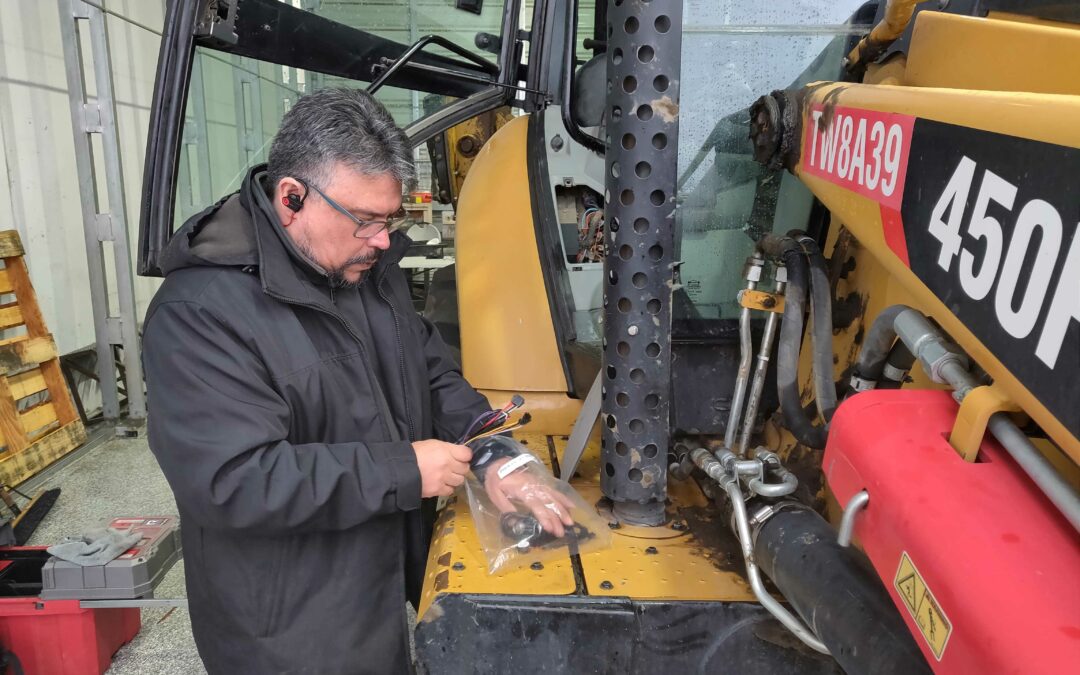Fleet GPS Installation Services
GPS installations have remained relatively consistent over the years. When the industry started every GPS tracker had to be 3-wired. Some companies tried to make them work with 2-wires but the data was not consistent. Then came the OBD GPS trackers and everyone thought the GPS installation business would evaporate. It turns out GPS installation is still very much in demand, largely because good GPS installers are not easy to find in every market or with the same degree of skill.
GPS installations get notably more complicated when PTOs and third party hardware are introduced. The industry as a whole has improved greatly as APIs for sharing data are common place and standardization improves.
Article by Eron Iler, Fleetistics
GPS Installation Basics
Doing GPS installs on your own can be done if you have the right skillsets, facilities and fleet access. Most mechanics quickly pick up on what is needed and get the job done. Training is still required to ensure standardization across the fleet which leads to predictable GPS data. Something as simple as securing the GPS device to a wire bundle verse the frame can lead to data discrepancies.
GPS Signal & Cellular Connection
Without a GPS signal, you will not receive location, speed and altitude data. GPS satellites transmit radio waves to GPS receives like those found in your phone, car and GPS tracker. The quality of the receiver has improved significantly over the years which is why you can often see your location in a home. With new GPS satellites being put into orbit, we can assume GPS tracking will continue to improve. Generally, thick metal, building construction and dense vegetation will obstruct a GPS signal. Testing is required to confirm the GPS device placement will work in your environment and vehicle or asset.
Cellular Connection
The GPS data collected is typically transferred to a cellular network tower, where the device unique IMEI and SIM card ISEI determines where the data is sent. Some GPS trackers use satellite communiction which is very sensitive to obstructions and must be line of sight to the sky. Cellular communication is shorter range but penetrates obstacles such as a building which is why you can make a call inside your home. Most people today understand the nuances of cellular communication and the limitations.
It is important to do your GPS installation a location that offers good GPS reception and cellular network coverage so you can test to confirm the installation is correct and working. In some situations there may be a requirement for a specific temperature range for adhesives to cure when mounting dashcams to windshields or trailer trackers to trailers.
GPS Tracker Tampering
Tampering has been a concern since the very first GPS tracker. There is no GPS installation method that will prevent driver tampering. 3-wire installs will not. In-dash installation will not. OBD installation will not. Y-harnesses will not. The only action that will deter tampering is what consequences you are willing to enforce when it happens.
We all know 99% of the drivers are good employees with nothing to hide. Companies spend a lot of time and money managing the 1%. The 1% will never be fixed and always have a different agenda. The best thing to do is free them of your company and let them work for a competitor. The only reason to tamper with a GPS tracker is to steal time &/or money from your company. Both are unacceptable and conscious decisions by the driver to violate published policy.
Communication is key to avoiding post separation issues for wrongful termination. The drivers know tampering with the GPS system is wrong, but they will do it anyway if they are not good employees. When an employee tampers with a GPS installation, they are making a choice to terminate their employment, not you.
When hiring new drivers, be up-front and let them know your company uses GPS trackers. If you are lucky, anyone with the wrong work ethic will not move forward after the interview. This saves your company a lot of training time, resources and money to onboard somoene who will eventually not make it.

